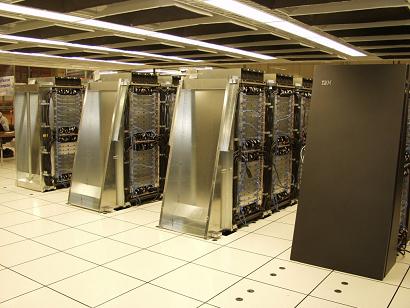How much does a supercomputer cost? Why do you even need supercomputers? Which companies develop technologies for supercomputers?
Avi Blizovsky

The Blue Jean/L computer manufactured by IBM, which is stationed at the Lawrence Livermore National Laboratory in California, has once again won the title of World Computer Champion in the list of the first 500 among the fastest supercomputers in the world, which are used for scientific applications.
The giant among giants has no less than 131,072 processors and its processing speed reaches 280.6 teraflops per second (one teraflop equals one trillion floating point operations).
Far behind, in second place, is another IBM computer, Blue Jean Watson, which operates on the same technology as Blue Jean/L, but contains fewer processors, so its processing speed also only reaches 91.29 teraflops. In tenth place on the list is a computer that previously topped the list, NEC's Earth Simulator in Yokohama, Japan, with a processing speed of 35.86 teraflops. In fact, the Earth simulator held the title between 2002 and 2004, until it was defeated by an earlier version of the current champion. The computer at the bottom of the list, whose power ranks 500th in the world, has a speed of 2 teraflops per second.
The journal Nature tried to explain the hidden meaning behind a processing speed of 280 teraflops per second. If each of the 6.6 billion inhabitants of the planet were given a pocket calculator, so that they could perform a simple calculation every five seconds, all of humanity would need almost 60 hours to perform the same number of calculations that it takes Blue Jean/L to perform in one second.
The computer is used for nuclear weapons research, but other supercomputers do many calculations, from stock market analysis to weather forecasting.
The list of 500 is processed twice a year (June and November) by a team of representatives from the University of Mannheim in Germany, the University of Tennessee in Knoxville and the Lawrence-Berkeley National Laboratory in California. The most recent list published this week is on the TOP500 Web site and was presented at a conference in Dresden, Germany.
Horst Simon, assistant director of the lab at Lawrence Berkeley, and a member of the TOP500 team, commented that the list only includes supercomputers that are used for scientific applications and those whose owners provide information to the list team. "Most of these people would like to have their computers listed," he said, "but some of the computer owners want to keep the performance of their supercomputers secret, including the supercomputers used by Google, Yahoo and Microsoft, as well as some government supercomputers."
"Several familiar names are mentioned as supercomputer manufacturers. IBM is the dominant supercomputer supplier, HP in second place. Intel processors are used in 301 of the 500 systems, but AMD is increasing its share quickly." Simon said.
In software, Microsoft is at the bottom of the list, with only two supercomputers using its operating system. The most common system is Linux, which serves 70 percent of the computers on the list.
Can we purchase such a computer? The answer is "yes", and provided we are rich enough. The fastest supercomputer may cost $100 million or more, while models at the bottom of the list sell for $1-2 million. It is possible to connect many personal computers together, in a cluster configuration with the capacity of a supercomputer. About a thousand powerful personal computers can reach the bottom of the 500 list together. "Some cookbooks tell you how to do it," Simon said.
In addition, it is worth noting that today, an average laptop is faster in power than the 500 supercomputer in 1992, and it is likely that most of us have computers with such power.
According to Simon, quantum computers have great potential, but it is difficult to answer the question 'will they take over the list of 500', because they will perform a completely different type of calculations than those performed by supercomputers. Comparing these two types is like comparing apples and oranges.
How long will Blue Gin/L keep his title? While the performance of computer chips doubles every 18 months or so, as Moore's Law shows, the capacity of supercomputers doubles every 11-12 months. Simon believes that "the current leader is so strong, and it seems that he will remain at the top of the list until the census in November 2007, at least, and maybe even until November 2008. However, after that, the big jump to 500, 600, 700, and maybe even a thousand teraflops is expected." Simon said. "A thousand teraflops are petaflops, and that's the next magic number."
They knew how to compute
Drafting and editing: H. J. Glykasm, translations and technical writing

One response
title***